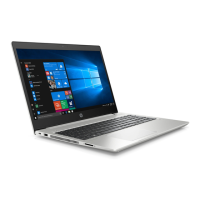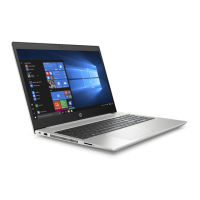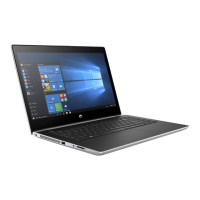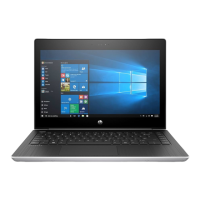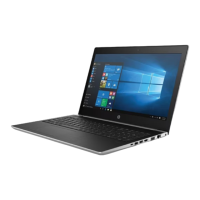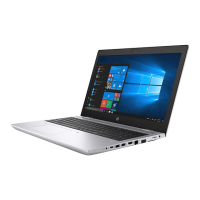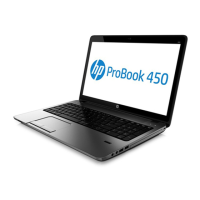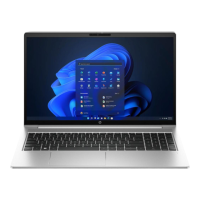
Do you have a question about the HP ProBook 455 G5 and is the answer not in the manual?
| Operating System | Windows 10 Pro |
|---|---|
| Processor | AMD Ryzen 5 |
| Graphics | AMD Radeon Vega Graphics |
| Display | 15.6-inch FHD (1920 x 1080) |
| RAM | Up to 32GB DDR4 |
| Weight | 2.1 kg |
| Ports | HDMI, RJ-45, headphone/microphone combo |
| Wireless | 802.11ac Wi-Fi, Bluetooth 4.2 |
Details product name, processors, graphics, panel, memory, storage, audio, Ethernet, wireless, ports, and docking.
Covers keyboard, touchpad, power requirements, security features, and operating systems.
Identifies end-user replaceable parts for maintenance.
Identifies ports and indicators on the right side of the computer.
Identifies ports and features on the left side of the computer.
Identifies components of the display assembly, including antennas and camera.
Details the touchpad, its zone, and its buttons.
Explains the function of various indicator lights and keys on the keyboard.
Identifies the power button, speakers, and fingerprint reader.
Explains the function of special keys like Esc, Fn, Windows, and the numeric keypad.
Identifies components located on the bottom of the computer, like service doors.
Explains the location and purpose of various labels on the computer.
Lists major computer components and their spare part numbers.
Details the components of the cable kit and their part numbers.
Lists display assembly components and plastics kit parts.
Covers bracket kits and mass storage devices with part numbers.
Lists various miscellaneous parts and their part numbers.
Covers tools required, service considerations, and handling plastic parts.
Provides precautions for handling cables, connectors, and drives.
Explains ESD, grounding guidelines, packaging, workstation, and equipment safety.
Introduces component replacement procedures and Battery Safe mode.
Details how to remove the main and drive service doors.
Guides for replacing memory, WLAN, storage, keyboard, and other internal parts.
Introduces procedures for parts serviced by authorized providers.
Details removal of the top cover, fingerprint reader, and power button board.
Guides for removing and replacing speaker and TouchPad assemblies.
Details removal of USB board, fan, card reader, battery, and system board.
Covers heat sink, RTC battery, power cable, and display assembly removal.
Explains how to access, start, and navigate Computer Setup (BIOS).
Covers restoring factory settings, updating, and determining BIOS version.
Details boot order changes, TPM settings, and HP Sure Start.
Overview of the UEFI diagnostics tool for hardware testing.
Instructions for downloading the UEFI diagnostics tool to a USB drive.
Details on configuring and customizing remote hardware diagnostics.
Methods for creating system recovery media and backups.
Options for restoring, refreshing, and resetting the computer.
Using recovery partitions, media, and changing boot order.
Details dimensions, weight, power, temperature, humidity, altitude, shock, and vibration.
Provides detailed specifications for the display, hard drives, and SSDs.
Steps to restore nonvolatile memory to factory settings via BIOS.
Details the types, purposes, and data handling of nonvolatile memory.
General requirements for power cord sets applicable globally.
Country-specific requirements for power cord sets and certifications.


